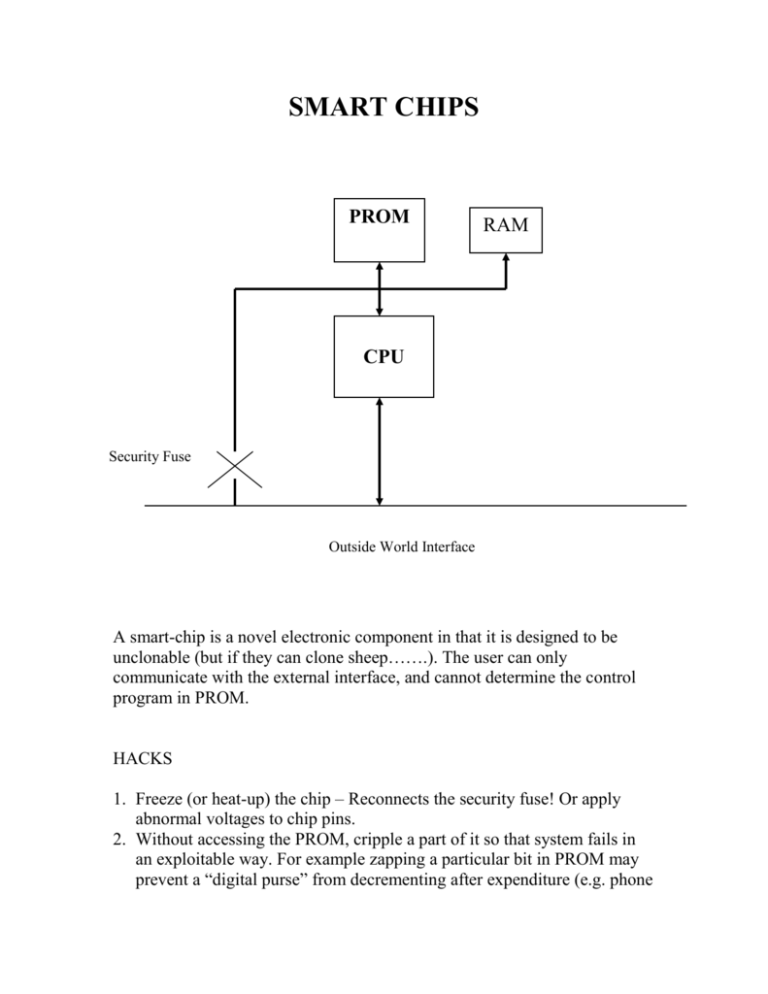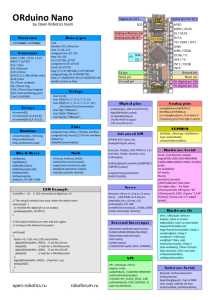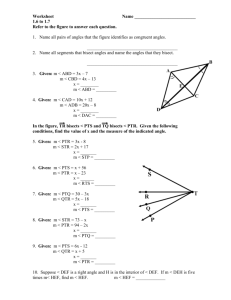
SMART CHIPS
PROM
RAM
CPU
Security Fuse
Outside World Interface
A smart-chip is a novel electronic component in that it is designed to be
unclonable (but if they can clone sheep…….). The user can only
communicate with the external interface, and cannot determine the control
program in PROM.
HACKS
1. Freeze (or heat-up) the chip – Reconnects the security fuse! Or apply
abnormal voltages to chip pins.
2. Without accessing the PROM, cripple a part of it so that system fails in
an exploitable way. For example zapping a particular bit in PROM may
prevent a “digital purse” from decrementing after expenditure (e.g. phone
card). Zapping a particular part of the PROM may cripple a pseudorandom number key generator so that it always generates the same key
(all zeros or all 1’s).
3. Somehow unmask the PROM and read-out its contents. This can be done
destructively.
4. Exploit a weakness in the design to figure out the key from many
“Chosen Challenges”.
Challenge-Response Authentication
In a simple challenge-response system, the smart-chip implements a simple
keyed one-way function. R=fk(C), where C is the challenge, k is the fixed
secret key, f() is a one-way function, and R is the response. The function f()
might be implemented by SAFER, or SHA, or by a secret proprietary
algorithm, in which case k may be unnecessary – the algorithm is the key.
In challenge-response authentication the authority issues a random
challenge, and, since it has access to all the information, calculates itself the
expected result. The possessor of the smart-chip also determines the
response and sends it back to the authority. If they compare, then the
transaction can proceed.
In a phone-card scenario the phone box itself contains the Authority
mechanism. When you insert the card the above protocol takes place, and a
counter inside the smart-chip is decremented as the call progresses.
In this case the smart-chip program can be extremely small, only a few
hundred bytes, plus a small RAM allocation.
Pay-TV smart cards work on a similar principle – see sky.c below. In this
case the response is used to key a random bit generator which is used to
scramble the picture at the transmission end, and to reassemble it at the
subscriber end.
/*
* This module contains the critical algorithm and secret key
* used by British Sky Broadcasting in their Videocrypt pay-TV
* chip card in 1993 and early 1994.
*/
#define ENCODE 0
#define DECODE 1
/*
* the secret
*/
unsigned char
0x65, 0xe7,
0x28, 0xd0,
0xa9, 0xec,
0x6c, 0xbc,
0xf9, 0x05,
0x70, 0x52,
0x50, 0x99,
};
key -- for your eyes only :-)
key[56] = {
0x71, 0x1a,
0x4c, 0x6e,
0x60, 0x42,
0xaf, 0xc3,
0xea, 0x51,
0x67, 0x26,
0x90, 0xa2,
0xb4,
0x86,
0x05,
0x2b,
0x46,
0x61,
0x36,
0x88,
0x8c,
0xf2,
0xb5,
0x9d,
0x49,
0x0e,
0xd7,
0xc8,
0x3d,
0xdc,
0xe2,
0x42,
0xfd,
0x76,
0x43,
0x1c,
0x90,
0x60,
0x09,
0x39
unsigned char answer[8];
int offset=0;
int ptr;
/*
* This is the core function of the decryption algorithm
* which is iterated 99 times by decode().
*/
void hash(unsigned char in)
{
unsigned char b, c;
answer[ptr] ^= in;
b = key[offset + (answer[ptr] >> 4)];
c = key[offset + (answer[ptr] & 0x0f) + 16];
c = ~(c + b);
c = (c << 1) | (c >> 7);
/* rotate 1 left */
c += in;
c = (c << 5) | (c >> 3);
/* rotate 3 right */
ptr = (ptr + 1) & 7;
answer[ptr] ^= c;
}
/*
* The decoder requests every ~2.5 seconds an answer to a 32-byte
* packet (message) from the chip card. The card's 8-byte answer to
* this request is calculated by this function.
*/
int code(unsigned char *message,int mode)
{
int i;
int check = 0;
/* flag for incorrect checksum */
unsigned char b;
ptr=0;
if (message[1] > 0x32) offset = 0x08; /* key selection */
if (message[1] > 0x3a) offset = 0x18;
for (i = 0; i < 8; i++) answer[i] = 0;
for (i = 0; i < 27; i++) hash(message[i]);
b=0;
for (i = 27; i < 31; i++)
{
hash(b);
hash(b);
if (mode==ENCODE)
{
b=message[i]=answer[ptr];
}
else
{
b = message[i];
if (answer[ptr]!=b) check |= 1;
}
ptr = (ptr + 1) & 7;
/* test signature */
}
/* set or test checksum */
b = 0;
for (i = 0; i < 32; i++) b += message[i];
if (mode==ENCODE) message[31]=(-b);
else if (b != 0) check |= 2;
for (i = 0; i < 64; i++) hash(message[31]);
return check;
/* if check != 0, the real card doesn't answer */
}
#include <stdio.h>
unsigned char message[32];
void main()
{
int i,r;
for (;;)
{ /* run simulation */
for (i=0;i<32;i++)
{ /* generate random 27 byte message */
if (i<27) message[i]=(unsigned char) rand();
else message[i]=0;
}
/* add signature & checksum
*/
code(message,ENCODE);
/* decode it at the other end */
r=code(message,DECODE);
printf("check= %d\n",r);
}
}
GSM mobile phones use a smart chip, called a SIM. The SIM individualizes
the phone, and makes it uncloneable.
Recently a cloning attack has been found for GSM phones. Full details of
the hack are described in http://www.scard.org/gsm/. The following is a
quote from that document. The SIM contains the smart-chip circuitry.
Technical details of the attack
We showed how to break the COMP128 authentication algorithm, an instantiation of
A3/A8 widely used by providers. Our attack is a chosen-challenge attack. We form a
number of specially-chosen challenges and query the SIM for each one; the SIM applies
COMP128 to its secret key and our chosen challenge, returning a response to us. By
analyzing the responses, we are able to determine the value of the secret key.
Mounting this attack requires physical access to the target SIM, an off-the-shelf
smartcard reader, and a computer to direct the operation. The attack requires one to query
the smartcard about 150,000 times; our smartcard reader can issue 6.25 queries per
second, so the whole attack takes 8 hours. Very little extra computation is required to
analyze the responses.
Though the COMP128 algorithm is supposed to be a secret, we pieced together
information on its internal details from public documents, leaked information, and several
SIMs we had access to. After a theoretical analysis uncovered a potential vulnerability in
the algorithm, we confirmed that our reconstruction of the COMP128 algorithm was
correct by comparing a software implementation to responses computed by a SIM known
to implement COMP128.
The attack was made possible by a leak of the supposedly secret A3/A8
authentication algorithms. Since many companies around the world have to
implement these algorithms in their smart-chips, it was only a matter of time
until this happened – the original leak seems to have come from Racal in the
UK. This is a classic example of the dangers of “security through obscurity”.
In the code below note particularly the “dumbing down” of the A5 session
key to a brute-force searchable 54 bits.
/* An implementation of the GSM A3A8 algorithm.
*/
(Specifically, COMP128.)
/* Copyright 1998, Marc Briceno, Ian Goldberg, and David Wagner.
* All rights reserved.
*/
/*
* For expository purposes only. Coded in C merely because C is a much
* more precise, concise form of expression for these purposes. See Judge
* Patel if you have any problems with this...
* Of course, it's only authentication, so it should be exportable for the
* usual boring reasons.
*/
typedef unsigned char Byte;
#include <stdio.h>
/* #define TEST */
/*
*
*
*
*
*
*
*
*
*
*
*
*
*
*
*
*
*
*
rand[0..15]: the challenge from the base station
key[0..15]: the SIM's A3/A8 long-term key Ki
simoutput[0..11]: what you'd get back if you fed rand and key to a real
SIM.
The GSM spec states that simoutput[0..3] is SRES,
and simoutput[4..11] is Kc (the A5 session key).
(See GSM 11.11, Section 8.16. See also the leaked document
referenced below.)
Note that Kc is bits 74..127 of the COMP128 output, followed by 10
zeros.
In other words, A5 is keyed with only 54 bits of entropy. This
represents a deliberate weakening of the key used for voice privacy
by a factor of over 1000.
Verified with a Pacific Bell Schlumberger SIM.
Your mileage may vary.
Marc Briceno <marc@scard.org>, Ian Goldberg <iang@cs.berkeley.edu>,
* and David Wagner <daw@cs.berkeley.edu>
*/
void A3A8(/* in */ Byte rand[16], /* in */ Byte key[16],
/* out */ Byte simoutput[12]);
/* The compression tables. */
static const Byte table_0[512] = {
102,177,186,162, 2,156,112, 75, 55, 25, 8, 12,251,193,246,188,
109,213,151, 53, 42, 79,191,115,233,242,164,223,209,148,108,161,
252, 37,244, 47, 64,211, 6,237,185,160,139,113, 76,138, 59, 70,
67, 26, 13,157, 63,179,221, 30,214, 36,166, 69,152,124,207,116,
247,194, 41, 84, 71, 1, 49, 14, 95, 35,169, 21, 96, 78,215,225,
182,243, 28, 92,201,118, 4, 74,248,128, 17, 11,146,132,245, 48,
149, 90,120, 39, 87,230,106,232,175, 19,126,190,202,141,137,176,
250, 27,101, 40,219,227, 58, 20, 51,178, 98,216,140, 22, 32,121,
61,103,203, 72, 29,110, 85,212,180,204,150,183, 15, 66,172,196,
56,197,158, 0,100, 45,153, 7,144,222,163,167, 60,135,210,231,
174,165, 38,249,224, 34,220,229,217,208,241, 68,206,189,125,255,
239, 54,168, 89,123,122, 73,145,117,234,143, 99,129,200,192, 82,
104,170,136,235, 93, 81,205,173,236, 94,105, 52, 46,228,198, 5,
57,254, 97,155,142,133,199,171,187, 50, 65,181,127,107,147,226,
184,218,131, 33, 77, 86, 31, 44, 88, 62,238, 18, 24, 43,154, 23,
80,159,134,111, 9,114, 3, 91, 16,130, 83, 10,195,240,253,119,
177,102,162,186,156, 2, 75,112, 25, 55, 12, 8,193,251,188,246,
213,109, 53,151, 79, 42,115,191,242,233,223,164,148,209,161,108,
37,252, 47,244,211, 64,237, 6,160,185,113,139,138, 76, 70, 59,
26, 67,157, 13,179, 63, 30,221, 36,214, 69,166,124,152,116,207,
194,247, 84, 41, 1, 71, 14, 49, 35, 95, 21,169, 78, 96,225,215,
243,182, 92, 28,118,201, 74, 4,128,248, 11, 17,132,146, 48,245,
90,149, 39,120,230, 87,232,106, 19,175,190,126,141,202,176,137,
27,250, 40,101,227,219, 20, 58,178, 51,216, 98, 22,140,121, 32,
103, 61, 72,203,110, 29,212, 85,204,180,183,150, 66, 15,196,172,
197, 56, 0,158, 45,100, 7,153,222,144,167,163,135, 60,231,210,
165,174,249, 38, 34,224,229,220,208,217, 68,241,189,206,255,125,
54,239, 89,168,122,123,145, 73,234,117, 99,143,200,129, 82,192,
170,104,235,136, 81, 93,173,205, 94,236, 52,105,228, 46, 5,198,
254, 57,155, 97,133,142,171,199, 50,187,181, 65,107,127,226,147,
218,184, 33,131, 86, 77, 44, 31, 62, 88, 18,238, 43, 24, 23,154,
159, 80,111,134,114, 9, 91, 3,130, 16, 10, 83,240,195,119,253
}, table_1[256] = {
19, 11, 80,114, 43, 1, 69, 94, 39, 18,127,117, 97, 3, 85, 43,
27,124, 70, 83, 47, 71, 63, 10, 47, 89, 79, 4, 14, 59, 11, 5,
35,107,103, 68, 21, 86, 36, 91, 85,126, 32, 50,109, 94,120, 6,
53, 79, 28, 45, 99, 95, 41, 34, 88, 68, 93, 55,110,125,105, 20,
90, 80, 76, 96, 23, 60, 89, 64,121, 56, 14, 74,101, 8, 19, 78,
76, 66,104, 46,111, 50, 32, 3, 39, 0, 58, 25, 92, 22, 18, 51,
57, 65,119,116, 22,109, 7, 86, 59, 93, 62,110, 78, 99, 77, 67,
12,113, 87, 98,102, 5, 88, 33, 38, 56, 23, 8, 75, 45, 13, 75,
95, 63, 28, 49,123,120, 20,112, 44, 30, 15, 98,106, 2,103, 29,
82,107, 42,124, 24, 30, 41, 16,108,100,117, 40, 73, 40, 7,114,
82,115, 36,112, 12,102,100, 84, 92, 48, 72, 97, 9, 54, 55, 74,
113,123, 17, 26, 53, 58, 4, 9, 69,122, 21,118, 42, 60, 27, 73,
118,125, 34, 15, 65,115, 84, 64, 62, 81, 70, 1, 24,111,121, 83,
104, 81, 49,127, 48,105, 31, 10, 6, 91, 87, 37, 16, 54,116,126,
31, 38, 13, 0, 72,106, 77, 61, 26, 67, 46, 29, 96, 37, 61, 52,
101, 17, 44,108, 71, 52, 66, 57, 33, 51, 25, 90, 2,119,122, 35
}, table_2[128] = {
52, 50, 44, 6, 21, 49, 41, 59, 39, 51, 25, 32, 51, 47, 52, 43,
37, 4, 40, 34, 61, 12, 28, 4, 58, 23, 8, 15, 12, 22, 9, 18,
55, 10, 33, 35, 50, 1, 43, 3, 57, 13, 62, 14, 7, 42, 44, 59,
62, 57, 27, 6, 8, 31, 26, 54, 41, 22, 45, 20, 39, 3, 16, 56,
48, 2, 21, 28, 36, 42, 60, 33, 34, 18, 0, 11, 24, 10, 17, 61,
29, 14, 45, 26, 55, 46, 11, 17, 54, 46, 9, 24, 30, 60, 32, 0,
20, 38, 2, 30, 58, 35, 1, 16, 56, 40, 23, 48, 13, 19, 19, 27,
31, 53, 47, 38, 63, 15, 49, 5, 37, 53, 25, 36, 63, 29, 5, 7
}, table_3[64] = {
1, 5, 29, 6, 25, 1, 18, 23, 17, 19, 0, 9, 24, 25, 6, 31,
28, 20, 24, 30, 4, 27, 3, 13, 15, 16, 14, 18, 4, 3, 8, 9,
20, 0, 12, 26, 21, 8, 28, 2, 29, 2, 15, 7, 11, 22, 14, 10,
17, 21, 12, 30, 26, 27, 16, 31, 11, 7, 13, 23, 10, 5, 22, 19
}, table_4[32] = {
15, 12, 10, 4, 1, 14, 11, 7, 5, 0, 14, 7, 1, 2, 13, 8,
10, 3, 4, 9, 6, 0, 3, 2, 5, 6, 8, 9, 11, 13, 15, 12
}, *table[5] = { table_0, table_1, table_2, table_3, table_4 };
/*
* This code derived from a leaked document from the GSM standards.
* Some missing pieces were filled in by reverse-engineering a working SIM.
* We have verified that this is the correct COMP128 algorithm.
*
* The first page of the document identifies it as
*
_Technical Information: GSM System Security Study_.
*
10-1617-01, 10th June 1988.
* The bottom of the title page is marked
*
Racal Research Ltd.
*
Worton Drive, Worton Grange Industrial Estate,
*
Reading, Berks. RG2 0SB, England.
*
Telephone: Reading (0734) 868601
Telex: 847152
* The relevant bits are in Part I, Section 20 (pages 66--67). Enjoy!
*
* Note: There are three typos in the spec (discovered by
* reverse-engineering).
* First, "z = (2 * x[n] + x[n]) mod 2^(9-j)" should clearly read
* "z = (2 * x[m] + x[n]) mod 2^(9-j)".
* Second, the "k" loop in the "Form bits from bytes" section is severely
* botched: the k index should run only from 0 to 3, and clearly the range
* on "the (8-k)th bit of byte j" is also off (should be 0..7, not 1..8,
* to be consistent with the subsequent section).
* Third, SRES is taken from the first 8 nibbles of x[], not the last 8 as
* claimed in the document. (And the document doesn't specify how Kc is
* derived, but that was also easily discovered with reverse engineering.)
* All of these typos have been corrected in the following code.
*/
void A3A8(/* in */ Byte rand[16], /* in */ Byte key[16],
/* out */ Byte simoutput[12])
{
Byte x[32], bit[128];
int i, j, k, l, m, n, y, z, next_bit;
/* ( Load RAND into last 16 bytes of input ) */
for (i=16; i<32; i++)
x[i] = rand[i-16];
/* ( Loop eight times ) */
for (i=1; i<9; i++) {
/* ( Load key into first 16 bytes of input ) */
for (j=0; j<16; j++)
x[j] = key[j];
/* ( Perform substitutions ) */
for (j=0; j<5; j++)
for (k=0; k<(1<<j); k++)
for (l=0; l<(1<<(4-j)); l++) {
m = l + k*(1<<(5-j));
n = m + (1<<(4-j));
y = (x[m]+2*x[n]) % (1<<(9-j));
z = (2*x[m]+x[n]) % (1<<(9-j));
x[m] = table[j][y];
x[n] = table[j][z];
}
/* ( Form bits from bytes ) */
for (j=0; j<32; j++)
for (k=0; k<4; k++)
bit[4*j+k] = (x[j]>>(3-k)) & 1;
/* ( Permutation but not on the last loop ) */
if (i < 8)
for (j=0; j<16; j++) {
x[j+16] = 0;
for (k=0; k<8; k++) {
next_bit = ((8*j + k)*17) % 128;
x[j+16] |= bit[next_bit] << (7-k);
}
}
}
/*
* ( At this stage the vector x[] consists of 32 nibbles.
*
The first 8 of these are taken as the output SRES. )
*/
/* The remainder of the code is not given explicitly in the
* standard, but was derived by reverse-engineering.
*/
for (i=0; i<4; i++)
simoutput[i] = (x[2*i]<<4) | x[2*i+1];
for (i=0; i<6; i++)
simoutput[4+i] = (x[2*i+18]<<6) | (x[2*i+18+1]<<2)
| (x[2*i+18+2]>>2);
simoutput[4+6] = (x[2*6+18]<<6) | (x[2*6+18+1]<<2);
simoutput[4+7] = 0;
}
#ifdef TEST
int hextoint(char x)
{
x = toupper(x);
if (x >= 'A' && x <= 'F')
return x-'A'+10;
else if (x >= '0' && x <= '9')
return x-'0';
fprintf(stderr, "bad input.\n");
exit(1);
}
int main(int argc, char **argv)
{
Byte key[16], rand[16], simoutput[12];
int i;
if (argc != 3 || strlen(argv[1]) != 34 || strlen(argv[2]) != 34
|| strncmp(argv[1], "0x", 2) != 0
|| strncmp(argv[2], "0x", 2) != 0) {
fprintf(stderr, "Usage: %s 0x<key> 0x<rand>\n", argv[0]);
exit(1);
}
for (i=0; i<16; i++)
key[i] = (hextoint(argv[1][2*i+2])<<4)
| hextoint(argv[1][2*i+3]);
for (i=0; i<16; i++)
rand[i] = (hextoint(argv[2][2*i+2])<<4)
| hextoint(argv[2][2*i+3]);
A3A8(key, rand, simoutput);
printf("simoutput: ");
for (i=0; i<12; i++)
printf("%02X", simoutput[i]);
printf("\n");
return 0;
}
#endif
Mobile cellular phones also support a “Voice privacy mask”. In CAVE this
is a 520-bit random bit-pattern, generated using the CAVE algorithm. A
different mask is generated for each call. 260 bits are used for each direction
of the duplex conversation. Compressed speech data is XORed with this
mask, repeated as often as necessary.
This is “joke” cryptography. An infinite stream of random bits is a OneTime Pad, and theoretically unbreakable. However constantly re-using the
same 260 bits in this fashion is very weak.
Politics
The main design criteria for mobile phone security are
Make it strong enough to discourage/prevent hacking by the wrong
people
Make it weak enough to allow/enable hacking by the right people
These criteria are hard to reconcile!
Key exchange
The fact that it is practicable for two individuals to negotiate a mutual secret
by shouting to eachother across a room full of inquisitive people, is one of
the great contributions of number theoretic cryptology. Another is that it is
possible for two potentially dishonest people to toss a coin over the phone.
Its a major problem just to convince oneself that these magical things are
indeed possible.
Consider this scenario. Yourself and your friend are talking on the phone.
One wants to go to the pictures, one to the theatre. How to decide? Toss a
coin. But there are obvious problems with this!
Exercise – Figure out a way of doing it. No computers required.
A major problem is that of key exchange or key distribution. In the old days
of classical cryptology two individuals might meet in a secret place and
exchange a mutual secret key, which would be used to encrypt
communications. Note that any communication that subsequently arrived
encrypted using this key, could be presumed to have come from the other
individual (as they were the only two people to have this key). This simple
technique therefore provides both secrecy and authentication.
However in the modern world of the internet/mobile phone it is extremely
inconvenient to meet in person, and the secure management of many
different keys would be required to maintain private communications with
multiple individuals.
Merkle’s puzzles
Consider a puzzle whose solution consists of the puzzle number and a secret
key. Say the key is a 64 bit hex number. Now generate a million of such
puzzles in order.
[0 12a5b783532f7cd3]
[1 54fc39a4a8b7519d]
[2 3e658c47a65ac3bb]
etc.,
Each puzzle is of equal difficulty, and its contents can be determined after
about 5 minutes work on your computer. The secret key component can be
used to commence a secure communication using a conventional cipher
algorithm
It is important to note that everything between the square brackets
constitutes the puzzle. In particular the puzzle must be solved to reveal its
number. Now transmit the puzzles in random order to a friend, in the
presence of your worst enemy.
Your friend picks one puzzle at random, solves it in 5 minutes, and shouts
back its number. You look up the puzzle in your ordered list, and now you
both have the same key! Your worst enemy has intercepted the entire million
puzzles, and also knows the puzzle number. However - how to find it? The
only way is to start “opening” the puzzles one after another - and expect to
try about half a million of them before getting lucky. Assuming the same
amount of computing power is available to all participants, that’s nearly 5
years work.
Now the big point here is that it isn’t impossible for the enemy to determine
the key, its just much more difficult. The difference between solving one
puzzle and solving half a million. So the idea is to make it computationally
infeasible for an outsider to determine the key.
As a mind game Merkle’s puzzles get us through the conceptual problem.
We now see that such a thing is indeed possible. But there must be a better
way - one million puzzles are a bit unwieldy.
Key Exchange using padlocked boxes
Sometimes simple “mind-games” can let us see more clearly what is
possible when intuition lets us down.
Consider the padlock. A padlock can be locked by anyone, but only opened
by the possessor of the key.
Consider a box with two locks. This device can be used for secret message
exchange. A box locked at least once is secure from prying eyes. Assume I
have one key and you the other.
I put the message in my box, and close my lock. I send the box to you. You
close your lock and send the box back to me. I now take off my lock and
send the box back to you. You take off your lock and recover the message.
At all stages in the communication the box was locked at least once. As
described this requires some prior arrangement to make the box and issue
the keys. However using padlocks, we need never meet. I buy my padlock
and the box, you buy your own padlock.
This is Shamir’s three-pass protocol. But we still need an enabling
technology to apply this protocol to messages exchanged between
computers. Can you think of one?
Alternatively I send you my opened padlock. You stick a message in a box
and padlock it, and send the box back to me. I open it and retrieve your
message. This is simpler but involves the other party applying my padlock.
Problem. How do I know that it was really you that applied my padlock. I
sent it to you openly, and it might have fallen into the wrong hands.
Solution? You apply your “seal” to the document before locking it in the box
with my padlock. A “seal” can be easily torn off by anyone, but only applied
by the owner.
Mathematically, how do we implement “padlocks” and “seals” for computer
communications?

![q [f] [-p p] [-s s] [-t t] [-u u] [-w w] [-r r] [-l] [-T t]](http://s3.studylib.net/store/data/007876033_2-31974a66cdc3b217fe0cbc2a896523ae-300x300.png)






